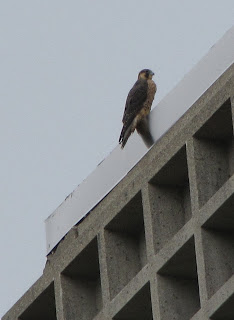Over on my Bug Eric Blog I thanked the many kind people at the University of Massachusetts for making my work life there so stress-free and enjoyable. I would be remiss, however, in not acknowledging the many people who made my private life exciting and fun and happy.
I have to start with Crystalyn Russell and her dog Ruby, who were my first housemates. Crystalyn works entirely too much, but she is young and will get over it eventually. She is a wonderfully compassionate individual who takes good care of her friends, animals, and friends’ animals. Keep on riding, Crystalyn.
The second half of my six months here was spent living in the house next door to Crystalyn’s place. Thanks go to Linda Phillips for taking a chance on a near total stranger. People are very trusting of each other here, but I still consider it quite a risk that Linda took. She is literally surrounded by family right here in this South Deerfield neighborhood, though, so I had to pass muster with brothers, and Linda’s visiting adult children, Dylan and Logan. I find it flattering that it is going to take two new tenants to replace me now that I’m leaving. Still, why couldn’t the female microbiology grad student from Ireland have started here last semester? Thanks, Linda, for tolerating my idiosyncrasies.
My “home away from home away from home” was Athol, thanks to Dave and Shelley Small and Lynn Harper, all of whom took me to some great wild places. Dave is President of the Athol Bird and Nature Club, and a manager of the Quabbin Reservoir (where Boston gets its drinking water). He kindly took me to places the public just can’t go. I can’t believe how easy-going Dave is considering his many responsibilities. He is literally on call 24/7 in case of an emergency at the reservoir (like when a beaver dam breaks and floods the road, stranding several fishing parties). They are constantly doing exercises in mock spill clean-up, etc. Quite an amazing operation they have there. Shelley is an archaeologist with the federal government. She is also a great hostess and made sure I had a bedroom to sleep in when I visited. Thank you to both of you, I owe you big time.
Lynn Harper insisted on dragging me to fiber festivals where I could see sheep, alpaca, people spinning yarn, and sharing knitting secrets. These are not the old maids of your grandmother’s era, though! Lynn and I also went to plenty of wild places, looking for dragonflies along various rivers, in bogs, and other habitats. Lynn works for the state office of Natural Heritage and Endangered Species Program, spending much too much time in a cubicle in a trailer, and the rest of it commuting to and from. I thank Lynn for also showing me the wonderful shops and eateries in places like Northampton, Greenfield, and Brattleboro, Vermont. Thanks, Lynn, for everything, give my best to Sophe and George (the cats).
When I wasn’t running around with Lynn and Dave Small, other folks were seeing to it that I got out and about. Nature photographer Steve Gingold patiently waited while I got my lazy bones out of bed to go looking for fauna and flora with him at High Ledges Wildlife Sanctuary and other great habitats. Steve is a true artist and takes great pains to get the perfect shot of a given insect, flower, mushroom, or landscape. Please visit Stephen Gingold Nature Photography to see what I mean.
John F. Carr took me afield a couple of times, including what may be the wettest, but most scenic hike I took out here, through October Mountain State Forest. Thanks so much, John, for letting me tag along. I enjoyed your company and sense of humor very much.
Last, but certainly not least, I have to thank the “bus gang” that commuted with me every morning to work on the UMass campus. They welcomed me instantly and we had many a laugh together. I got to go to the Keene, New Hampshire Pumpkin Festival thanks to them, and could have done lots of other things, too, if I hadn’t been “booked” already doing something else. They also made me join Facebook, for which I am actually grateful. Fondest thoughts and wishes to Stefanie Krug (who is taking me to the airport today), Francoise Walk, Jane Wrisley, Joanne Provost, Margaret Ludlam, Sandy Hay, Diane Willard, Heidi Bauer-Clapp, Craig West, and Gaetan Jacques. Wish I could take you all back to Tucson.
There you have it, the principal “supporting cast” for my Massachusetts odyssey. Everyone should be so lucky.
















































